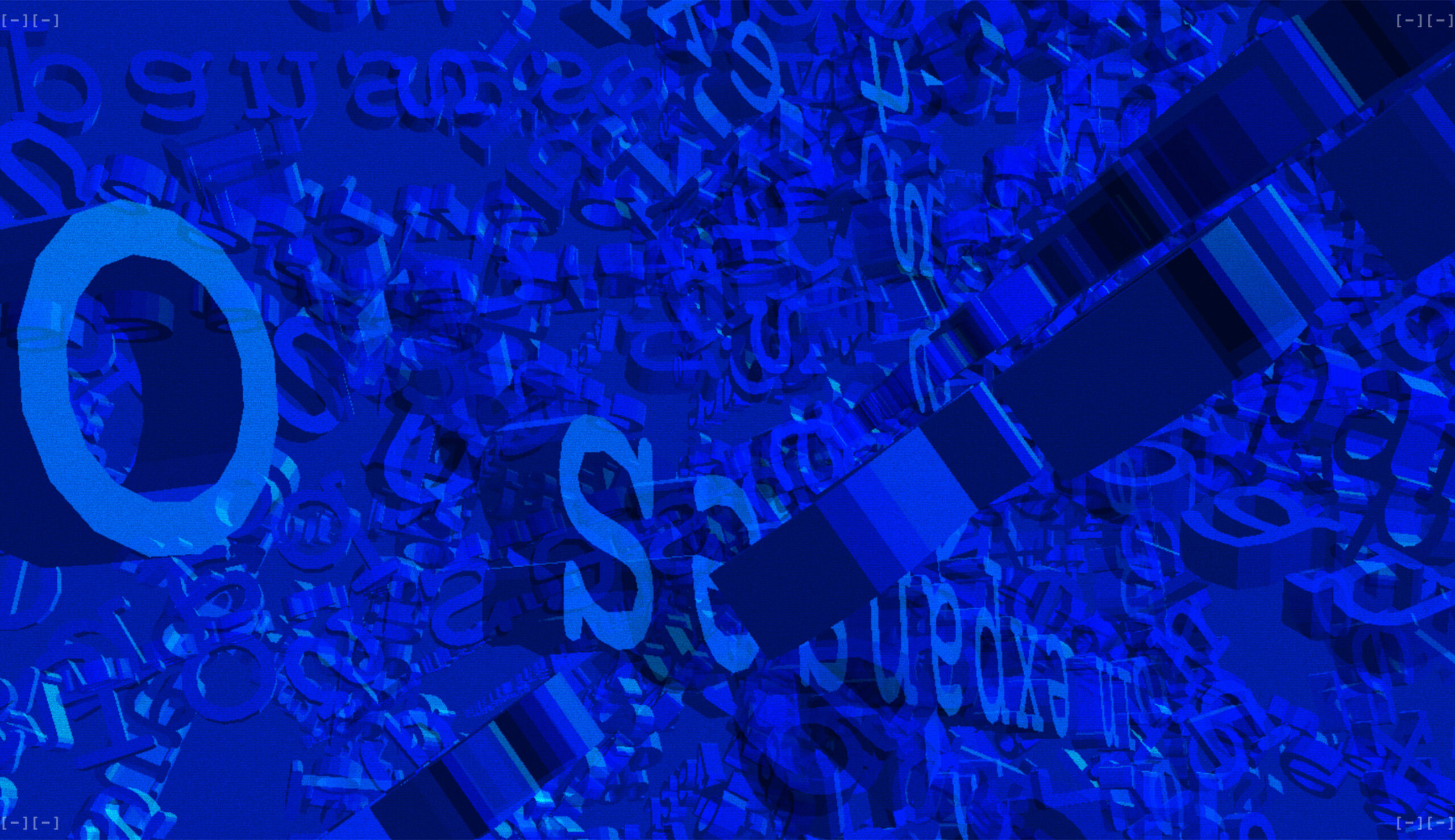Images courtesy of the artists
Programming language and coding aren’t as dry as just a bunch of 1’s and 0’s. Be it coding projects that transform the Mona Lisa into the color palette of other iconic artworks, or characters from The Simpsons as CSS, the creative boundaries of programming are as boundless as the imagination of the creator. At a new exhibition in Brooklyn, two coders are investigating new forms of communication between man and machine, as well as how images can be used as the foundation of programming language (rather than the other way around).
Videos by VICE
Starting this Saturday, the Brooklyn-based Transfer Gallery will offer its space to A Bill Miller and Daniel Temkin, two new media artists who will use their new exhibition, Language and Code, to present new methods of “creative coding.” Showcasing impressive alternative visual experiences generated with original means of manipulating texts and images, as the two artists combine their most recent forays into contemporary communication systems and human/machine interactions into web-based works, the viewer will be immersed into the heart of a conceptual exploration into our nascent post-digital era.
On one end, Daniel Temkin (who debuted his Glitchometry series at Transfer back in December) will present his Light Pattern programming language, a set of programs written in a unique language that replaces traditional syntax and encoding with information from a kaleidoscopic series of digital photographs; according to color schemes and exposures. In other words, Temkin’s piece uses images as its source code.
Explains Temkin, “To make Light Pattern programs for my ‘Hello, World‘ series for example, I often shoot outside close to noon, considered the worst time of day to shoot (due to high contrast). This is the best time, since I have to take many different exposures to get a working program. It’s the photos taken collectively that are important; no one image does anything in LP.”
He told The Creators Project, “I go out to shoot knowing that it’s very likely my Light Pattern program will fail; most of them don’t work. They don’t print the correct thing or they just crash. I do everything I can to make a program that works, but then, once I’ve made this effort, I no longer really care whether it succeeds; it’s about how this attempt shapes the images, not whether it actually works.”
For the occasion, not only will Temkin present videos that testify to the originality and beauty of his new language, he will also reveal the Light Pattern device— a camera, arduino controller, and system of rotating filters— that automates his shooting process.

On the other hand, through 8 abstract animations that fall in line with his previous work, A Bill Miller (of Plink Flojd fame) will offer gridCycles, a new digital textual environment. Developed in Javascript 3D library three.js and webGL to enable direct web browser access, this series of experimentations takes advantage of the technical and aesthetic specificities of the world wide web. Here, Miller revisits the origins of the image/text relationship, and imagines an evolution on the theme through new developments in web code.
“This […] presents a new challenge for me because the animation is entirely code-based.” Miller told us. “It only occurs in the browser and doesn’t require rendering out an animation, compressing it, posting to a video hosting service and sharing socially. It also presents an opportunity to make an animated environment that is interactive at some level, even if a lot of it is predetermined.”
The collaborative show is not only an open door to new forms of communication and exchange between humans and machines, it’s also an open invitation to reexamine the relationship between text and images.


Take a detour to Transfer this Saturday for the show’s opening night, or visit the exhibition, ongoing through September 1.
Related:
I Became An Algorithm At The Museum Of Modern Art
Error-Ridden Data Visualizations Become Beautiful Accidental Art
More
From VICE
-

Photo: NATALIA ANDREEVA / Getty Images -

(Photo by John Nacion/Variety via Getty Images) -

Illustration by Reesa -

(Photo by Prince Williams/WireImage)